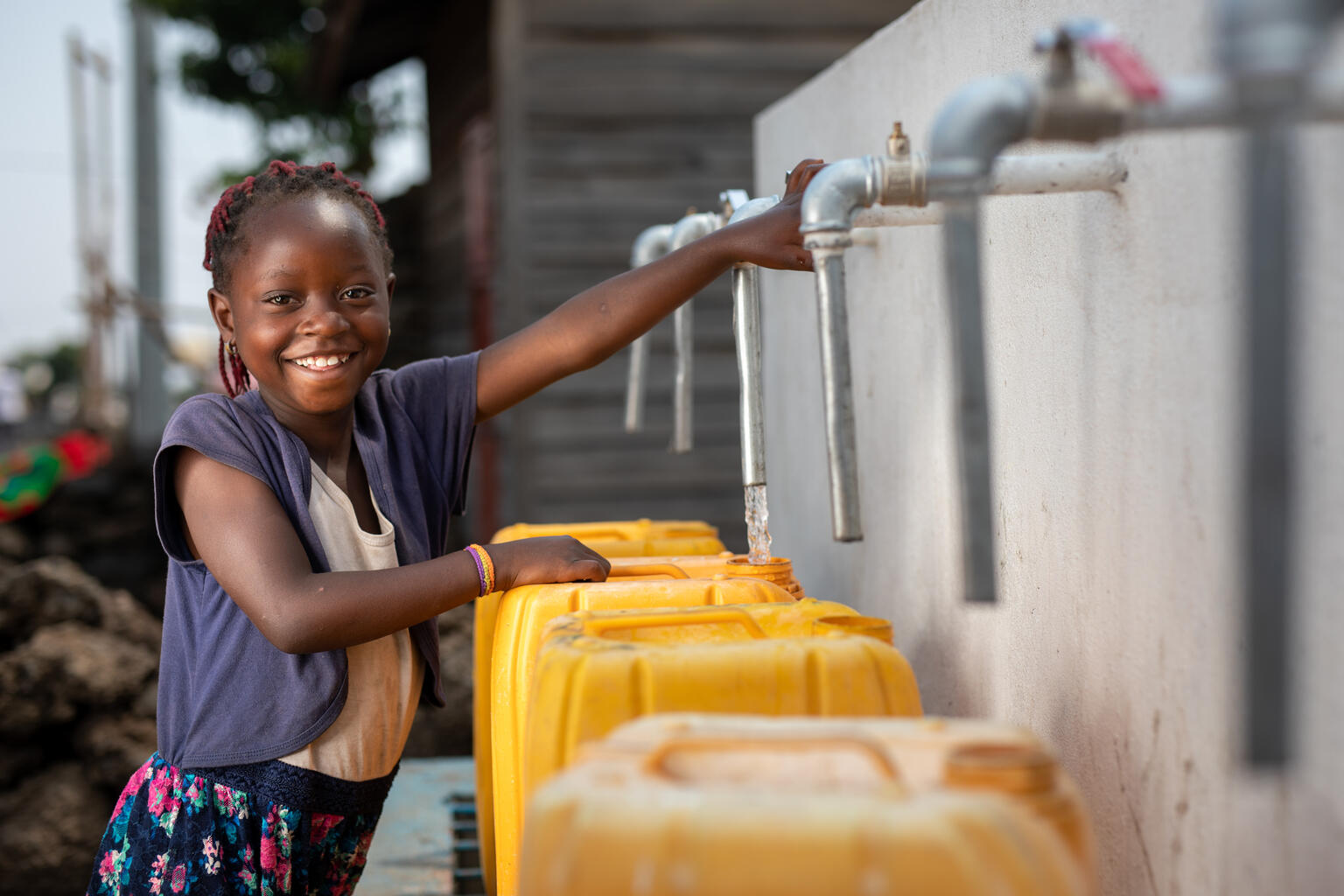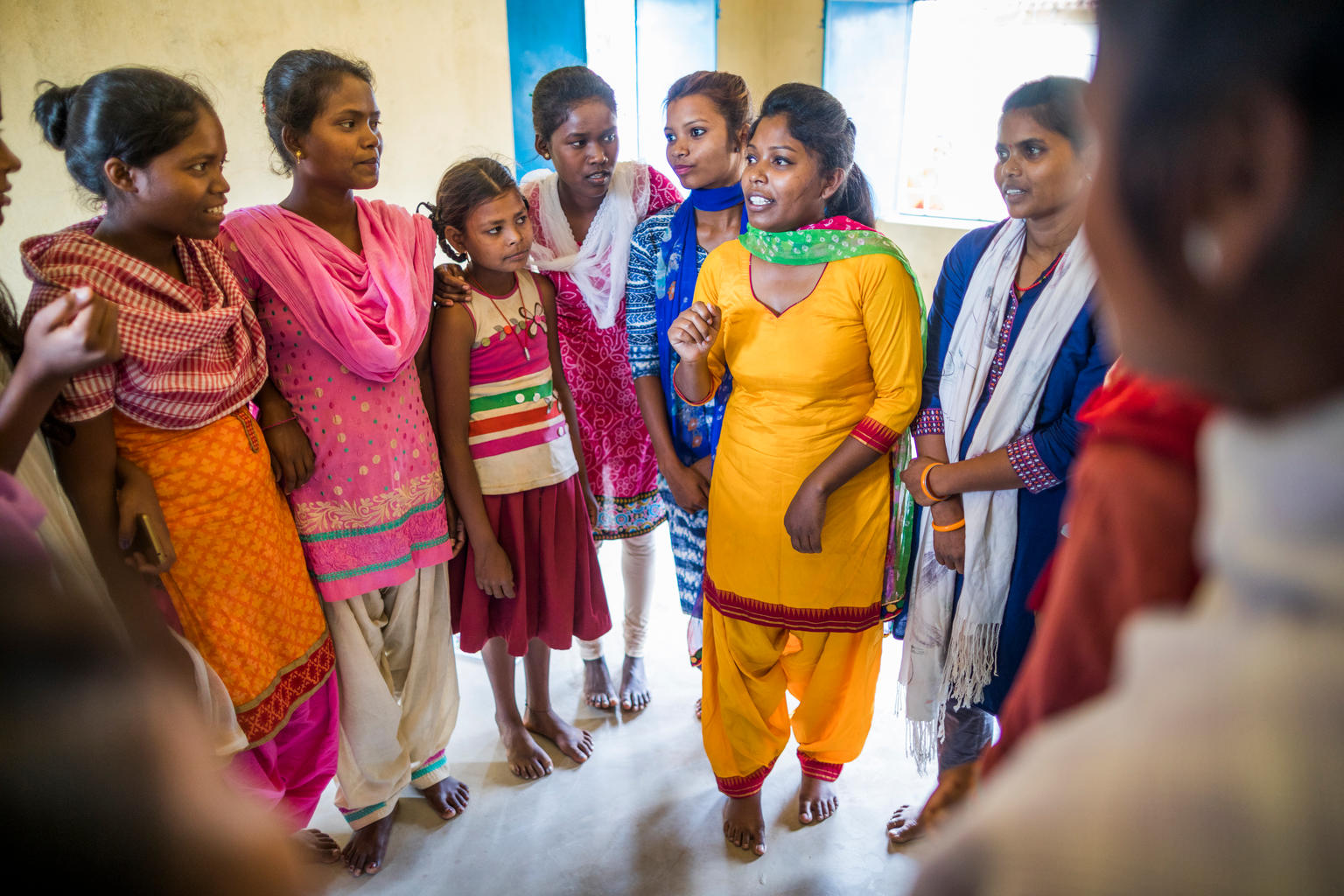Water and Gender
Without safely managed water, sanitation and hygiene (WASH) services, women and girls are more vulnerable to abuse, attack and ill-health, affecting their ability to study, work and live in dignity.
Improvements to WASH at home, school, work and in public spaces support gender equity. Women and girls must play a central role in designing and implementing solutions, so that services respond to their specific needs.

The issue explained
Women and girls usually have the responsibility of fetching water. This can be a dangerous, time-consuming and physically demanding task. Long journeys by foot, often more than once a day, can leave women and girls vulnerable to attack and often precludes them from school or earning an income.
For women and girls, sanitation is about personal safety. Having to go to the toilet outside or sharing facilities with men and boys puts women and girls at increased risk of abuse and assault.
Women and girls have specific hygiene needs. A clean, functional, lockable, gender-segregated space is needed, with access to sanitary products and disposal systems, for women and girls to manage menstrual hygiene and pregnancy.
Lack of safely managed water and sanitation is an equality issue. Women and girls are disproportionately affected by poor water, sanitation and hygiene services and facilities. However, their voices and needs are often absent in the design and implementation of improvements, thereby ensuring their continued marginalization.
By failing women and girls, we risk the 2030 Agenda. Access to water and sanitation are human rights. Where females are unable to enjoy those rights, their health is profoundly affected, curtailing their educational and economic opportunities, and denying them their full role in society.

The way forward
WASH must be seen through a gender lens. Policies and action plans must respond to the needs of women and girls by involving them in the planning, decision-making and governance of services.
Gender-responsive WASH is critical for the 2030 Agenda. Embedding gender equity into policy at all levels will be crucial to achieving water and sanitation for all, which in turn will help advance many other parts of the SDG agenda, particularly poverty reduction, health, education, and work.
WASH is critical to eliminating violence against women and girls. Female safety and dignity must be paramount in WASH service design. Plus, rectifying gender imbalances in WASH governance and management, at all levels, will ensure the suitability of services and raise the status of women in society.
Facts and Figures
- Worldwide, only 2 out of 5 schools (39%) provide menstrual health education. (WHO/UNICEF, 2024)
- Adolescent girls and women living in rural areas are more likely to use reusable materials, or no materials at all, to manage menstruation. (WHO/UNICEF, 2023)
- 1.8 billion people still do not have drinking water on-premises, and in two out of three households, women are primarily responsible for water collection. (WHO/UNICEF, 2023)
- Fewer than 50 countries have laws or policies that specifically mention women’s participation in rural sanitation or water resources management. (UN-Water, 2021)
- More than 1 million women and girls say that WASH services are their second most important demand for quality reproductive and maternal health, after dignified and respectful care. (WHO/UNICEF, 2023)
- 1 million deaths each year are associated with unclean births. Infections account for 26% of neonatal deaths and 11% of maternal mortality. (WHO/UNICEF, 2019)
- While supplying almost half of all agricultural labour in low and middle-income countries, women’s agricultural productivity is on average 20–30% lower than male farmers’. (FAO, 2017)
